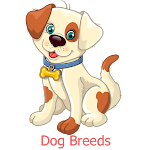
Introduction
The Australian Terrier is a small, sturdy, and courageous breed that hails from Australia. Known for their charming personality and loyalty, these dogs have become popular companions around the world. In this article, we will explore the history of the Australian Terrier breed and delve into the characteristics that make them so beloved.
History of the Australian Terrier
The Australian Terrier, also known as the "Aussie," has its roots in Australia, where it was developed in the early 19th century. The breed was created to assist in controlling vermin on the farms and ranches of the Australian outback. It is believed that the Australian Terrier is a result of crossing various British terriers, including the Cairn, Dandie Dinmont, and Skye Terriers, as well as the Yorkshire Terrier.
Over time, the Australian Terrier has evolved into a beloved family pet, known for its intelligence, agility, and affectionate nature. The breed was officially recognized by the Australian National Kennel Council in 1933 and by the American Kennel Club in 1960.
Physical Characteristics
The Australian Terrier is a small, well-proportioned dog with a rough-textured coat that comes in shades of blue and tan. They have a weather-resistant outer coat and a soft undercoat, making them well-suited for various climates. Their erect ears, dark brown eyes, and docked tail give them a distinctive appearance.
On average, Australian Terriers stand between 10 to 11 inches tall at the shoulder and weigh between 14 to 16 pounds. Despite their small size, they are sturdy and robust, with a confident and spirited demeanor.
Personality and Temperament
One of the most endearing qualities of the Australian Terrier is their charming and affectionate personality. They are known for their loyalty and devotion to their families, often forming strong bonds with their human companions. Additionally, they are playful, energetic, and enjoy being involved in various activities, making them great companions for active individuals and families.
Furthermore, Australian Terriers are intelligent and independent, with a streak of determination. They are quick learners and excel in obedience and agility training. However, their independent nature means they may have a stubborn streak at times, requiring consistent and firm guidance from their owners.
Care and Maintenance
Despite their luxurious coat, Australian Terriers are relatively low-maintenance when it comes to grooming. Regular brushing and occasional trimming to keep their coat neat and tidy are all that's required. They are a hardy and healthy breed, with a lifespan of around 12 to 15 years.
Like all dogs, Australian Terriers require regular exercise to keep them happy and healthy. Daily walks, playtime, and mental stimulation are essential to prevent boredom and ensure they remain well-behaved companions.
Conclusion
In conclusion, the Australian Terrier is a delightful and charming breed with a rich history and an endearing personality. Their loyalty, intelligence, and affectionate nature make them wonderful companions for individuals and families alike. With proper care, training, and love, the Australian Terrier can thrive and bring joy to the lives of their owners for many years to come.
FAQs
Are Australian Terriers good with children?
Australian Terriers are generally good with children, as long as they are properly socialized and trained. However, it's important to supervise interactions between the dog and young children to prevent any rough play that could lead to accidents.
Do Australian Terriers get along with other pets?
With proper socialization, Australian Terriers can coexist peacefully with other pets in the household. However, they may have a tendency to assert their dominance, especially with dogs of the same sex, so early socialization is key.
What are some common health issues in Australian Terriers?
While Australian Terriers are generally healthy, they may be prone to certain conditions such as patellar luxation, Legg-Calve-Perthes disease, and diabetes. Regular veterinary check-ups and a healthy diet can help prevent these issues.


